Well, we had an excellent day (albeit pretty chilly to start with!) and about 15 people turned up for our field trip (unfortunately in smaller areas it made photography pretty tricky!).
We started the morning at CTC Aviation, a large UK owned flight training organisation specifically set up to train airline pilots for the likes of EasyJet etc. We had a brief presentation explaining the training philosophy, which may have its sceptics, but actually makes a lot of sense. We then donned fluoro vests (everything is run along airline principles) and went out on to the ramp:
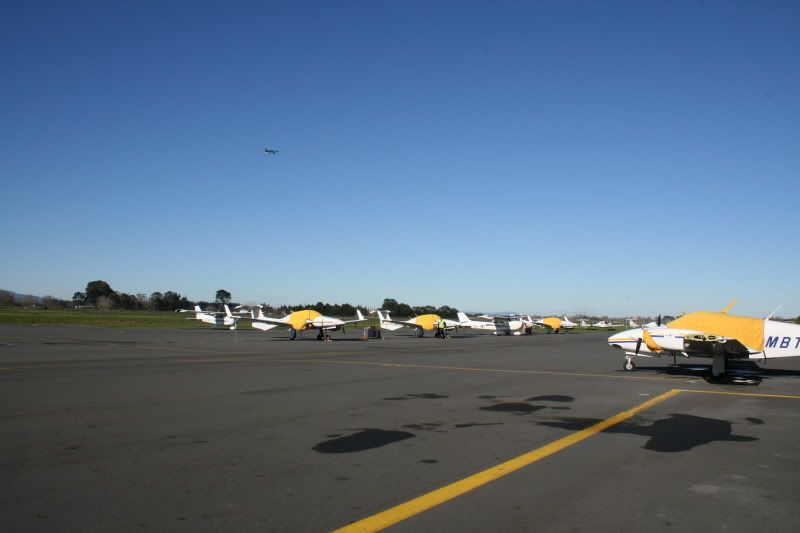
we then moved to the Hangar where 2 Diamond Twinstars were undergoing maintenance. Unfortunately neither had the cowls off, as we would have liked to see the Thielert Diesel engines.
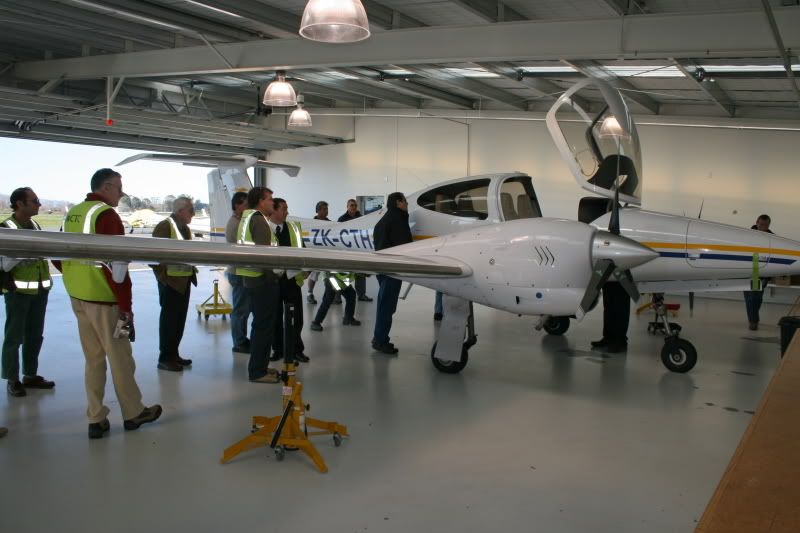
The quality of finish on the twinstar is superb, and they are a quantum leap from the traditional light twins used up until now. They may be ugly, but they are still very impressive.
This is the rear of the engine nacelle - note the attention to detail around the cooling efflux - prescisely shaped vanes tidy up all the airlow allowing effective cooling but further reducing drag.

CTC has two comprehensive flight simulators, the newest being this twinstar sim (The cabin is off the actual twinstar moulds)

the other, older sim has just arrived from the UK and is a Beech King Air, used mainly for instructor training.
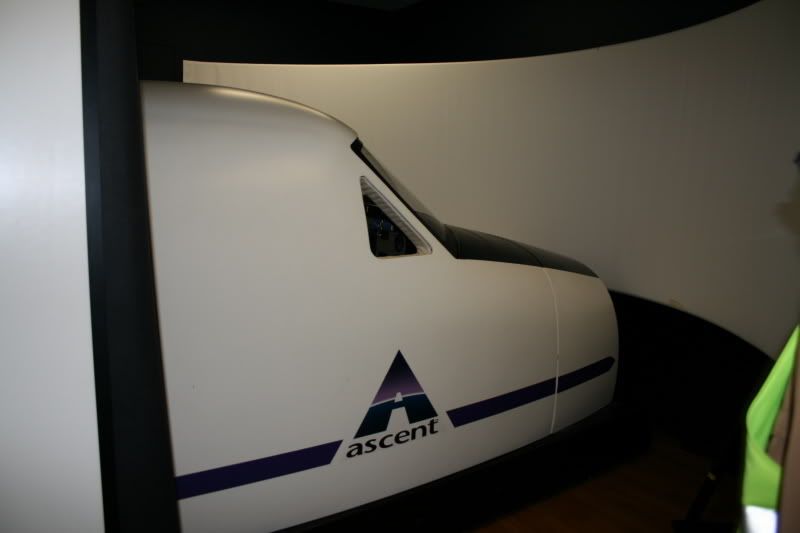
Next stop on the tour was Alpha Aviation, where QA manager Tony Schischka showed us around the production line, starting in the component bay (wing leading edges in the foreground)
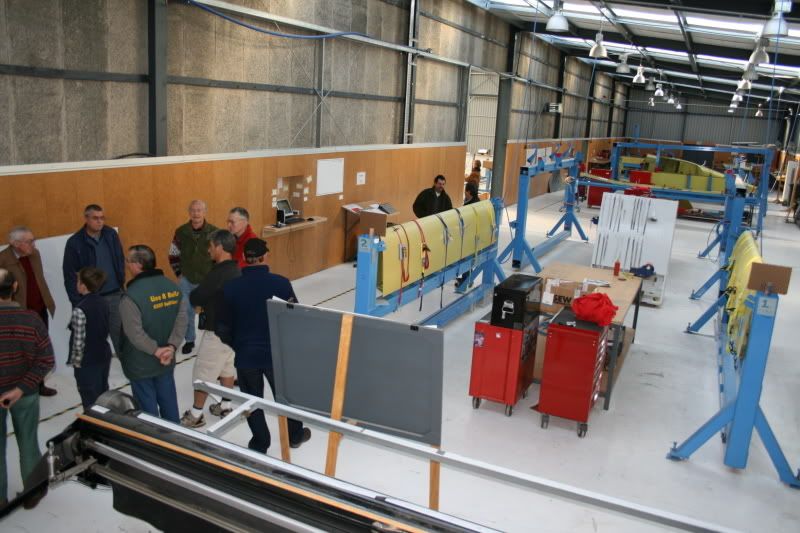
fuselage production starts with the belly panel / cockpit floor:
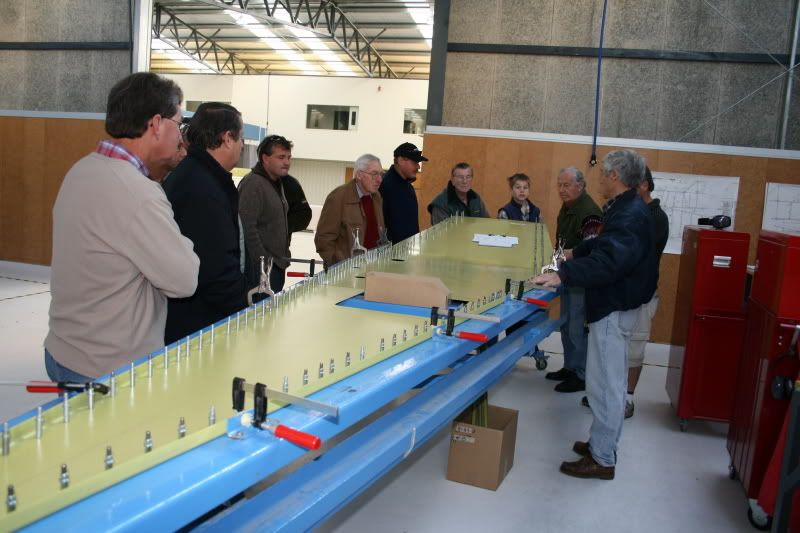
The general construction of an Alpha is extremely simple, it doesnt take many more pieces and you have a fuselage:
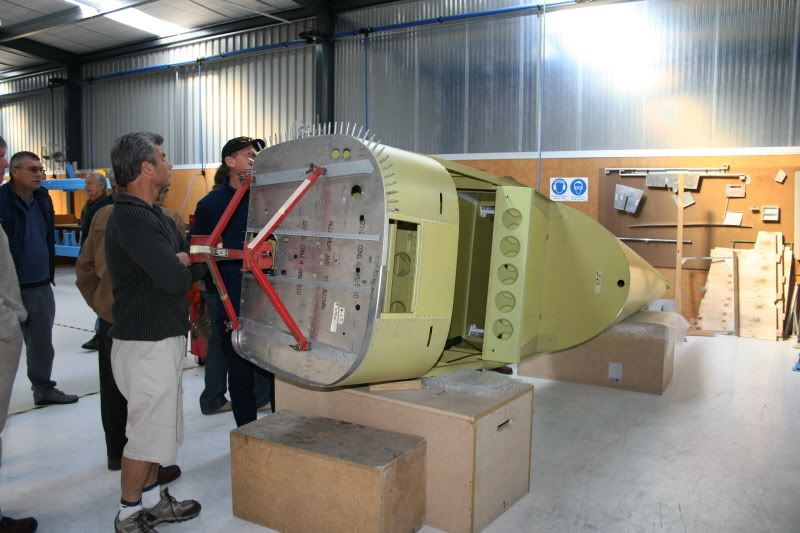
The main assembly bay is laid out for 4 airframes to be assembled at once, however as the component suppliers are still coming up to speed, only one, s/n 012 is in the bay at the moment. This is an Alpha 160A with a carburetted 160 HP Lycoming. the other variants are the 160Ai with an aerobatic injected engine, and the 120 with the 115hp Lycoming O-235. s/n 15 will be the first NZ produced 120.
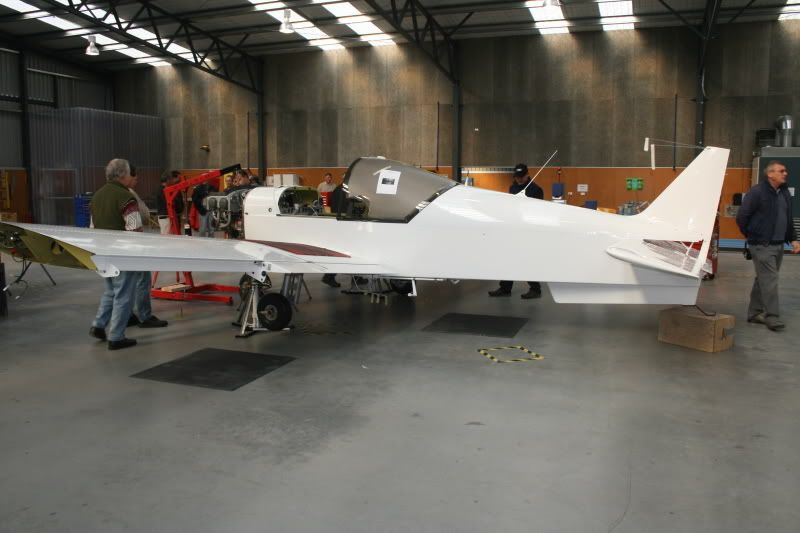
Lunch was calling so we moved over to Central Aircraft Engineering where Paul Waterhouse had a BBQ fired up (nice of him to do that). Inside the hangar was a project that started off as a Titan T51 Mustang, but has now been substantially re-engineered. This aircraft is now stronger and heavier, and will be powered by a 200hp Rotary engine.

sharing the hangar is a machine from the other end of the performance scale, a McNair Mynah ultralite (sometimes referred to as a flying gate!) A limited run of these little biplanes were built in the 1980s in the Waikato (another Waikato built aircraft) but despite excellent flying characteristics have been largely forgotten. Paul has 3 in various states of repair in the hangars.
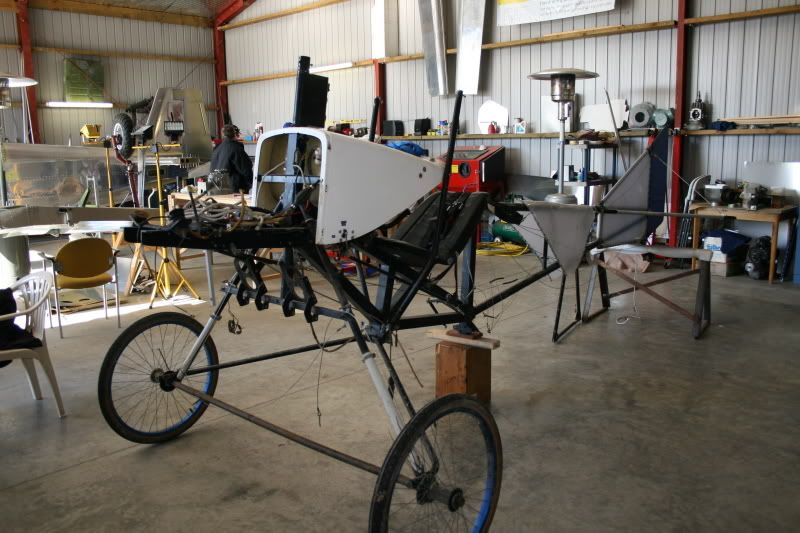
a large coil of rubber bungee sits on the engine mounts - Paul denies it is a new power plant!
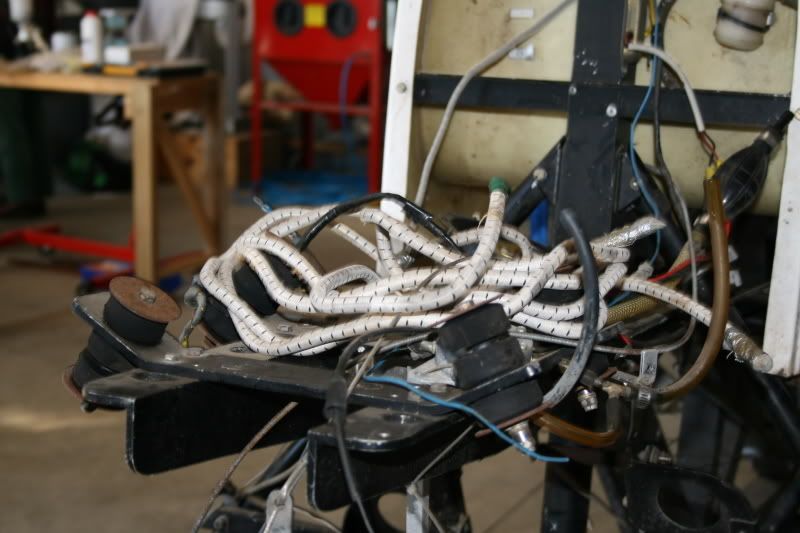
Finally our visit was capped off with a climb up 5 floors worth of stairs to the top of the Hamilton Control tower. This was only built about 2 years ago, and is a massive improvement on the old tower. Although it was a quiet afternoon, there were still plenty of aircraft being worked by the two controllers. The view was excellent in all directions, and the staff were very helpful. The off duty controller who showed us around was very willing to answer questions about the services they provide, and getting a controllers perspective (literally) was very educational.

Many thanks to all the organisations that hosted us today.



